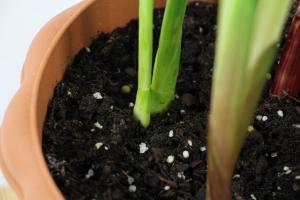Introduction
Indoor potted plants are a great way to add natural beauty to your home or office. But to keep them thriving, it's important to know how often to water them. The proper watering schedule depends on a variety of factors, including the type of plant, the size of the pot, the type of soil, and the amount of sunlight the plant receives. In this article, we'll explore some general guidelines for watering indoor potted plants.
Type of Plant
The type of plant you're growing is one of the most important factors to consider when determining how often to water. Some plants, like succulents, cacti, and other desert plants, require infrequent watering. These plants are adapted to arid conditions and can store water in their leaves and stems. On the other hand, tropical plants like ferns, peace lilies, and orchids prefer more frequent watering.
Research the specific watering requirements of the plants you're growing. This information can usually be found on the plant label or through a quick online search.
Size of Pot
The size of the pot also plays a role in determining how often to water. Smaller pots dry out more quickly than larger pots, so plants in small containers may need to be watered more frequently than those in bigger pots. To ensure that the soil is evenly moist, water the plant until the excess water drains out of the bottom of the pot. Discard any excess water after watering.
Type of Soil
The type of soil you're using can also affect the plant's watering needs. Soil that's made up mostly of peat or other organic matter retains water well and may need to be watered less often. Sandy or rocky soils drain more quickly and may require more frequent watering.
In addition, some potting mixes include moisture-retaining additives, like vermiculite, perlite, or coconut coir. These can help keep the soil consistently moist and reduce the need for frequent watering.
Amount of Sunlight
The amount of sunlight your plant receives also affects how often it should be watered. Plants that are placed in direct sunlight and experience high temperatures may need to be watered more frequently. Plants that are placed in low-light areas or near cool drafts may need to be watered less frequently.
Keep an eye on your plant and the surrounding environment to determine the ideal watering schedule.
Conclusion
Watering indoor potted plants can be a bit of trial and error, but by considering the plant's type, pot size, soil, and sunlight exposure, you can develop a schedule that works for your plants. Remember, it's better to underwater than overwater your plants. Too much water can lead to root rot and other problems. With a bit of attention and care, your indoor potted plants can thrive and add beauty to your space for years to come.

 how many times do yo...
how many times do yo... how many planted tre...
how many planted tre... how many pine trees ...
how many pine trees ... how many pecan trees...
how many pecan trees... how many plants comp...
how many plants comp... how many plants can ...
how many plants can ... how many plants and ...
how many plants and ... how many pepper plan...
how many pepper plan...





























